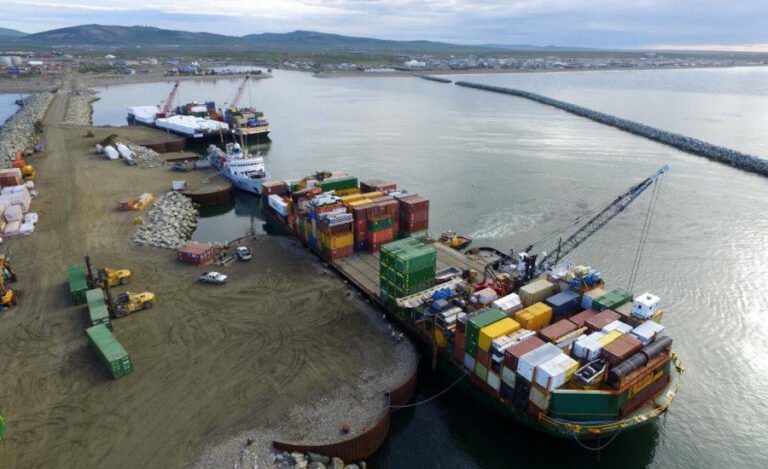
The nation’s first deep-water Arctic port at the Port of Nome will have to wait as the U.S. Army Corps of Engineers Alaska canceled the first phase of the 662 million dollars during the procurement stage due to the price of bids received for the work.
Corps officials canceled the request on Oct. 16, noting that bids received for the work exceeded available funding for the project. The project was officially classified as “inactive” on Oct. 31, but the Army Corps of Engineers says that will change “as soon as possible.”
“We remain fully committed to awarding a construction contract for the Nome Harbor Modification Project,” Corps officials said in a statement.
The number of offers and their amounts were not disclosed. Corps officials said the Procurement Integrity Act prohibits them from releasing information from bidders’ proposals, including specific price information, and say it is “incorrect to say the government’s estimate was unrealistic,” in instead of saying that it is true that the bids were higher than expected. .
Funding for the project includes 90% of the project money coming from the federal government and the remaining 10% from the City of Nome. Public procurement laws prohibit accepting contracts 25% above the estimated cost.
his Lisa Murkowski (R-Alaska)
says he spoke with Corps management after the decision and insisted they “find a way to rectify these mistakes and present a timely path to construction.”
“I am deeply frustrated by the Army Corps’ abrupt cancellation of the contract solicitation for construction of Phase 1 of the Port of Nome,” says Murkowski. “Expansion of the Port of Nome is not just an Alaskan priority, it is imperative to our national security…”
Nome Mayor John Handeland says in a statement that the news “is a delay, not a cancellation.”
Says completion of project is vital to city, region, state and nation “It’s disappointing that the Arctic Deep Draught Port project in Nome is experiencing another unexpected schedule disruption” , he says, adding that the city did not receive advance notice. out of the news because of strict federal hiring rules.
The city plans to meet with the Corps to review a revised cost estimate to move forward with available funding and have a revised application by Jan. 15, 2025, Handeland says.
The Corps says that, along with the City of Nome, they will take “information learned during the application process” to evaluate how best to move forward, adding that they will “continue to work diligently to get this project awarded successfully as soon as possible.”
The arctic launch
The project will allow the port, also known as Nome Harbor, to handle more ships at any given time and increase its harbor depth from 22 feet to 40 feet, enough to adequately accommodate a range of vessels for trade, tourism and national security. .
A project partnership was signed between the federal and local governments on January 25, and the original plan was to award a contract in late summer 2024, with construction in the spring of 2025. The pause in the project puts doubt these dates and the Body says so. it is too early to discuss the details of any future decisions.
The main objective of the three-phase project is to expand the outer basin of Nome Harbor while creating a new deep-water basin, a first in the Arctic for the United States. Dredging will deepen and maintain deep and outer water basins and associated navigation channels. The first phase is expected to last three to four seasons with full completion of the project originally scheduled for completion in 2030.
Serving as a regional center located in the center of Alaska’s west coast, the Port of Nome was established in 1917 on the Seward Peninsula, adjacent to Norton Sound. It is 545 miles northwest of Anchorage and has no access to Alaska’s major highway systems. Government officials believe that Nome, with a population of 3,500, is of critical importance to the viability of surrounding communities. The port also provides a launch point for ships heading to the Bering Strait shipping lanes.
Depending on the size of the ships in the port, the expansion will double or triple the number of ships capable of docking at one time. The 40-foot deep water basin allows the port to accommodate large cruise ships, cargo ships and all U.S. military vessels smaller than an aircraft carrier.
Handeland previously said the U.S. has long needed a deep-water port to enable refueling and refueling services for the national security fleet operating in the Arctic.

